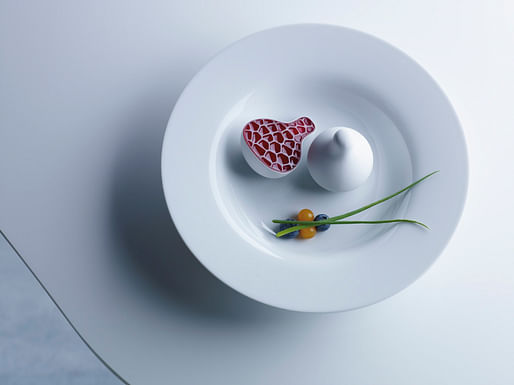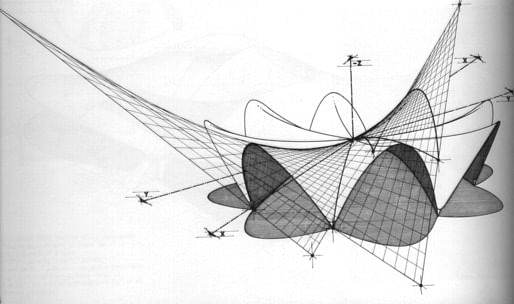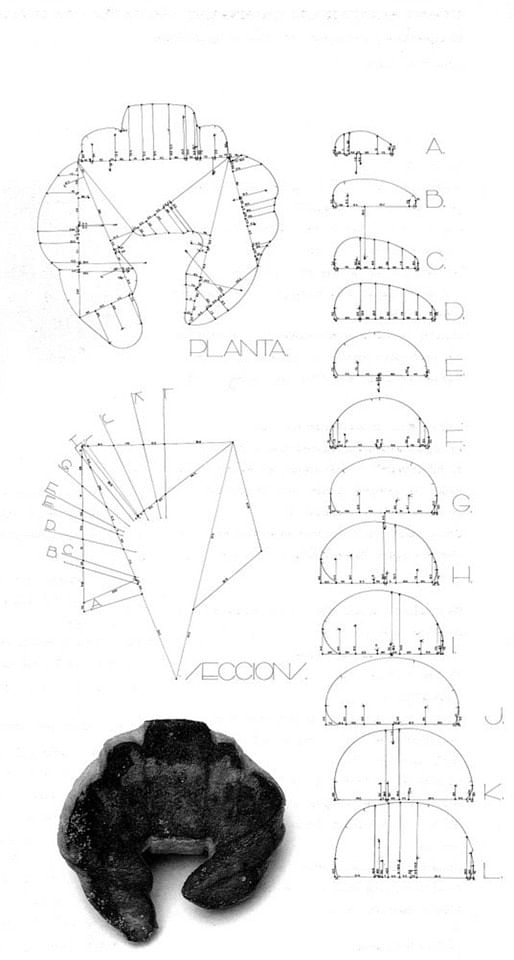

What do cooking and mixology have to do with architecture? Can food and drink, as prototyped and iterative objects, help us better understand architectural design? The AA Visiting School is traveling to San Juan, Puerto Rico this summer for “Play With Your Food”, to tackle these questions and, in the process, try to find the secret link between gastronomy and architecture.
Program directors Drew Merkle, Jorge Mendez-Caceres and Miguel Miranda (all recent alumni of AA’s DRL program) laid out "Play With Your Food" for us over email, touching on their own histories with culinary experimentation and why they decided to host the school in the alleged “rum capital of the world”.

What inspired AA to create a visiting school on the relationship between food and architecture?
It was really us that brought the idea to Chris Pierce and Brett Steele who are the directors of the Visiting School, and the AA respectively. The relationship between food and architecture, is something which has been around for a while. From Cedric Price to Enric Miralles, food has influenced architects and architecture in many ways. In our case we have really been inspired by the creative and research processes of Ferran Adriá and his team at elBulli Restaurant and now elBulli Foundation outside of Roses, Catalonia, Spain. The things that these guys were creating and designing with food, is something revolutionary, and were things unheard of fifteen years ago.
Why choose San Juan for the visiting school?
San Juan has a fresh culinary scene and vibrant design culture. For us, Puerto Rico culinary heritage is very diverse having influences from so many cultural backgrounds (African, Spanish, American, and Latin American) all within such a small area. In Puerto Rico, there are three main processes for cooking or making food, which are aging, frying and roasting. We are on the Aging Phase of our Visiting School, hence our interest in Rum as the main ingredient. Being the Rum Capital of the World, Puerto Rico serves as the perfect scenario to experiment and innovate with this material. Along with this, we have a great partnership with the Universidad of Puerto Rico, School of Architecture. In this partnership, we are able to use the school’s facilities and hopefully create a continued and open dialogue between the two forums.
What types of research will the students be engaged in? What kind of design projects will they be developing?
Research will be developed in two aspects, digitally and analogue. Being that this is the aging phase of the school, the students will be focusing on a small scaled ‘Architectural’ design with Rum being the medium of choice. The intent is a bit open in terms of the final outcome for each student or group of students; this could range from something as simple as a glass for drinking Rum or the design of the bottle; to something more highly complex where Rum and other paired ingredients are cooked or assembled in a kitchen and a new way of tasting and ingesting the beverage is designed. We think this is really up to the students to interpret their research and what they want, but the idea is that in the end they have new ways to taste, or ingest, or experience the Rum through a highly refined design process.

What are your own backgrounds in cooking/food/mixology?
We all like to cook and we all love to eat!
Drew Merkle: It’s therapeutic as well as fun to do. And, who doesn’t like to eat? A good friend of mine and I were having a conversation some time ago where we were discussing the best meals we’d ever experienced/eaten. And, I don’t remember the setting, but he had this theory and I believe it to this day that we all have had a meal or a moment where it was a food vs. sex moment. And what that means is that the food is so good, and the atmosphere and ambiance so perfect for the occasion that you would rather eat than have sex. So, food for me is something that is a very much enjoyed thing, and the ritual of eating a well prepared, well thought out, and well-presented meal is something magical. As for mixology, I’m from the south, so grew up drinking beer or Maker’s Mark straight. So, until I moved to London and met these guys, I never really had an experience where I was mixing drinks to the extent that I would approach that of a mixologist's level or an experience where my perceptions were transformed until visiting two bars...one being Purl in London which does this amazing Smoked Wood Aged/Infused Rum. With each drink the taste changes. The beverage is presented in a little vial which also contains some smoke from the fired wood. You uncork the vial, pour your drink, and enjoy...when it comes to the next glass, you find that it is completely different because the oxygen has reacted with the smoke and the rum in such a way that it seems you’re tasting a completely different Rum. The surprise gotten from that is inexplicable. The other time was in La Factoria which is in Old San Juan, where the mixologist/bartender made this amazing drink that created such a synesthetic experience for me, that it sort of took me to another place, due to the smell and the taste of the thing. I was reminded of a smell from my childhood, which though unexpected, was utterly pleasant.
Miguel Miranda: I agree with Drew that Purl in London offers an amazing one-of-kind experience and in San Juan the bar which is currently pushing the mixology culture is definitely La Factoria. The mixologists behind La Factoria are always seeking out ways to redefine the local classics and incorporate fresh local ingredients. This shows how the creativity behind cooking or creating a drink sometimes is as challenging as designing an object or piece of architecture. Within the last year, I took a Food Design course with Marc Bretillot and Emillie Baltz in France. This was the first time I realized the power and influence food had over so many aspects of our life and most importantly was the fact the food as a “material” may be the only material with so much rich historical and cultural knowledge. To think of food without any cultural perception is impossible, making it one of the most interesting materials to work with. The other important aspect of food is how it incorporates the notion of the senses to the equation adding a whole new “dimension” of information to use while designing.
Jorge Mendez-Caceres: Who doesn't like to eat and drink? In my case food experimentation has been key to my personal development as a designer. So much so, that there are many times where I thought about a complete change in career. I grew up in a highly creative environment where cooking was always a method for experimentation and exploration. I can greatly appreciate the moment of rejoice when design paid off, or when ingredients went together to produce a favorable outcome; when a cake rose properly or a piece of meat from the grill turned out just right. In my house growing up, we weren’t big on sleep, so a scene like baking a basic carrot cake at two in the morning without carrots was not uncommon, and would become a tool for improvisation and often a tool of surprise. The kitchen would become a lab for alcoholic experimentation, where different fruits and spices were added to homemade rum , which was left to age for two to three years under the kitchen cabinet. I personally see these processes very much tied to what we as designers do everyday; experiment with materials and the presence or lack of geometry and trying to see concrete or ethereal results that synergistically affect the user; the consumer, us.

What is program’s primary goal?
The primary goal of the program is to bridge the gap between the fields of Architecture, Contemporary Gastronomy, and Mixology; associate their similarities and differences in order to discover intrinsic characteristics and establish relationships between each, whilst also attempting to feed and grow the knowledge base, design approach and thought processes within the fields in a very experimental yet practical manner.
What similarities or intersections do you see regarding contemporary architecture and gastronomy?
Both disciplines are constantly in flux, and quite open to progression through many available means. The architectural and the gastronomical fields are undergoing revolutionary changes in practice and research, and are constantly reinventing themselves through the works of some of the most exciting practitioners and researchers in the most exciting international offices/research institutes/schools and the most exciting international kitchens, bars, and culinary institutes. We think the most common denominator is the creative process behind design-research in architecture and contemporary gastronomy. In both, you see the constant need to prototype to test out ideas, and cooking provides a quick way of rapidly-prototyping a recipe or an idea similar to what we are currently experiencing in architecture with all the commotion behind rapid prototyping technologies.

Whether in Architecture it be by developing new 3D analytical software, or a modeling program that aids in the rationalization of a highly complex structure in real time, so that it can be more easily understood in the field and be more easily represented to a client or another proponent in the field — or in Molecular Gastronomy/ Mixology, it be by creating a new technique for the sensorial representation of a dish or drink, which involves research into the chemical makeup of a series of ingredients that, when combined, create a certain manner for display and presentation not thought possible — one which evokes feelings and senses simply through the taste and smell and look of a dish or drink that would be unheard of ten years previous.
— DM, MM, JM-C

"Play With Your Food" will take place in coordination with the Universidad de Puerto Rico, Escuela de Arquitectura in San Juan, from Monday June 30 through Friday, July 11.
Applications are open until June 23rd. For more details regarding fees, eligibility, and how to apply, click here.
No Comments
Block this user
Are you sure you want to block this user and hide all related comments throughout the site?
Archinect
This is your first comment on Archinect. Your comment will be visible once approved.